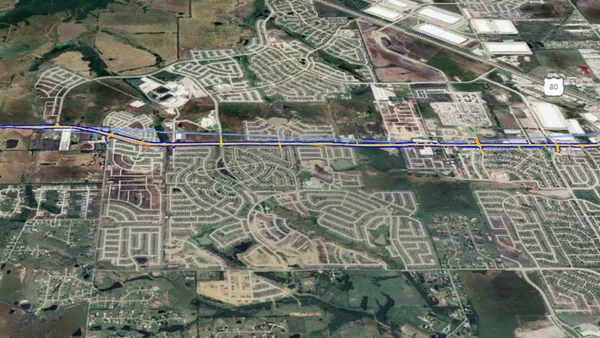Dive Brief:
- An American Road and Transportation Builders Association study has found that approximately 9% of U.S. bridges — 55,710 — were structurally deficient in 2016, down from 58,495 in 2015.
- The five states with the highest number of deficient bridges were Iowa (4,968), Pennsylvania (4,506), Oklahoma (3,460), Missouri (3,195) and Nebraska (2,361), and the five states with the biggest percentage share of deficient bridges were Rhode Island (24.9%), Iowa (20.5%), Pennsylvania (19.8%), South Dakota (19.6%) and West Virginia (17.3%).
- ARTBA classifies a bridge as deficient if one or more of its major elements is in poor condition, but all bridges listed are not "imminently unsafe." Experts predict it would cost approximately $700 billion to make all the necessary repairs and upgrades to the bridges on the list, according to U.S. News & World Report.
Dive Insight:
With this report, the ARTBA also pointed to the important role the federal government plays in the maintenance of state transportation systems, as it pays for more than 51% of those projects on average. State by state, Rhode Island has the most federal funding at 98% of capital outlays for surface transportation, and New Jersey has the least at 29%. The federal Highway Trust Fund allocates money to states for their road and bridge projects, but the gas tax that funds it has not kept pace with the demand, so state and federal officials are concerned with finding additional sources of money. Newly confirmed Transportation Secretary Elaine Chao will play a key role in state and federal infrastructure needs.
Many are looking to the infrastructure promises made by the new administration. President Donald Trump made infrastructure a high-priority issue in his campaign and based a $1 trillion plan on the ability to attract private investment in exchange for significant tax breaks. Advocates say the strategy will put the risk and pressure of financing massive projects on the shoulders of the private sector, allowing the federal government to provide more direct funding. However, opponents argue that there are necessary, non-revenue-generating projects that will go unaddressed because they don't provide a profit incentive for investors.













